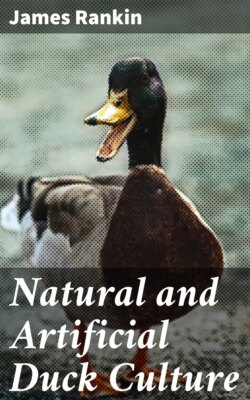Читать книгу Natural and Artificial Duck Culture - James Rankin - Страница 15
На сайте Литреса книга снята с продажи.
The Outside Plan of a Breeding and Brooding House
ОглавлениеTable of Contents
with the exception of a little more glass in the latter, should be precisely the same both for ducks and ducklings. The internal arrangements can be made to suit. As I shall give a full description with cuts of this building later, I will now merely give the manner in which it should be arranged as a good breeding-house for ducks. This building should be fifteen feet wide and any length required. It should have an uneven double roof, five-foot posts in the rear and four foot in front. About one-quarter of this front should be glass. There should be a walk the entire length of the building three and one-half feet wide. The main body of the building should be divided into pens twenty feet long, by either lath or wire two feet high.
The walk should be separated from the pens by laths three inches apart, to allow the birds to feed and water from the walk. This method simplifies the labor very much, as it enables the operator to load his barrow, travel the whole length of a 200-foot building and feed and water 500 ducks in a few minutes. This arrangement has many other advantages besides, as it permits the birds to feed and water readily from the walk without being able to waste either, or mix the contents of food and water-dishes with filth. It also prevents the birds from sopping the straw in the bottom of their pens, or of soiling their white plumage, both of which they are bound to do if possible, and as the duck, especially the Pekin, is a very timid bird, this plan familiarizes her with the appearance of the attendant without bringing her into actual contact with him.
